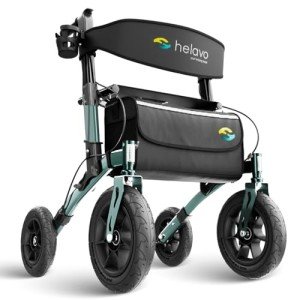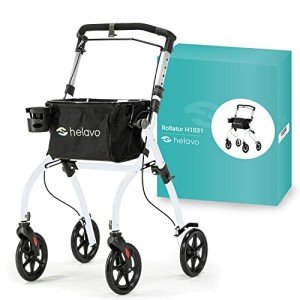Ergonomic Walker Tips To Relax Your Daily Life Ergonomic Walker Trick …
페이지 정보
작성자 Lien 작성일 25-10-06 23:23 조회 2 댓글 0본문
The Benefits of Non-Slip Walkers: Enhancing Mobility and Safety for All
As we navigate through the diverse landscape of mobility help, one important product stands apart: the non-slip walker. This necessary tool not just aids those with minimal mobility however likewise promotes independence and safety. In this article, we will explore the benefits of non-slip walkers, the various types available, and what features to search for when choosing the perfect walker. Along the way, we will answer frequently asked questions and supply insights that boost understanding of this essential mobility device.
Why Choose a Non-Slip Walker?
Non-slip walkers are specifically developed with security in mind. Slips and falls can trigger major injuries, particularly for elderly individuals or those recovering from surgery. Integrating anti-slip features into a walker can drastically minimize the risk of mishaps, making it an important choice for anybody in requirement of assistance. Here are a few reasons a non-slip walker is a worthy financial investment:

- Enhanced Stability: Non-slip grips and rubberized wheels provide exceptional traction on different surface areas.
- Improved Safety: The design reduces the probability of slips, providing users confidence as they move.
- Increased Independence: Those who may have formerly depended on caretakers can regain some degree of autonomy.
- Versatile Design: Non-slip walkers can be customized to fit a variety of individual needs and choices.
Kinds Of Non-Slip Walkers
Non-slip walkers been available in numerous designs, each tailored to accommodate different mobility requirements. Below is a comparison table highlighting the most typical types of non-slip walkers offered:
| Type of Walker | Features | Suitable For | Rate Range |
|---|---|---|---|
| Standard Walker | Four legs, lightweight, rubber pointers | General usage, moderate assistance | ₤ 50 - ₤ 100 |
| Two-Wheeled Walker | Two front wheels, 2 rear legs with rubber pointers | Individuals who need assistance but can stroll | ₤ 70 - ₤ 150 |
| Heavy-Duty Rollator Walker | Four wheels, braking system, seat alternative | Active people; provides a rest option | ₤ 100 - ₤ 250 |
| Knee Walker | Created for people with knee injuries | Short-term healing from leg or foot injuries | ₤ 80 - ₤ 200 |
| Pediatric Walker | Smaller sized size, colorful styles | Children with mobility problems | ₤ 60 - ₤ 120 |
Elements to Consider When Choosing a Non-Slip Walker
Choosing the best non-slip Medical-Grade Walker can be an overwhelming job. Here are some factors to bear in mind when deciding:
- User's Weight and Height: Ensure that the walker supports the user's weight and fits their height.
- Kind of Surface: Consider where the walker will be mostly used (inside your home vs. outdoors) to choose a suitable tire configuration.
- Mobility and Weight: If the walker requires to be transported, consider weight and foldability for benefit.
- Adjustability: Look for a Medical-Grade Walker that can be gotten used to the user's specific height needs, ensuring convenience and security.
- Extra Features: Some walkers consist of features such as built-in seats, storage baskets, or Advanced Mobility Solution braking systems.
Extra Features of Non-Slip Walkers
While analyzing non-slip walkers, several extra features can enhance user experience:
- Ergonomic Walker Grip Handles: Soft and comfortable grips can reduce pressure on the hands.
- Reflective Materials: Adding increased presence can help those who may be utilizing the walker in low-light conditions.
- Adjustable Accessories: Consider alternatives like cup holders, trays, or even oxygen tank holders for included convenience.
- Sturdiness: Look for walkers constructed from high-quality products to guarantee long-lasting usage.
Often Asked Questions (FAQs)
1. What is the primary distinction between a standard walker and a rollator?
- A standard walker has four legs and needs the user to lift it with each action, whereas a Ergonomic Rollator Walker has wheels, allowing the user to push it along more easily.
2. Are non-slip walkers suitable for outdoor use?
- Yes, lots of non-slip walkers are developed for different surface areas. It's crucial to select a model with suitable wheels for outdoor surface.
3. Can a non-slip walker be used by people who have had hip or knee surgery?
- Absolutely. Non-slip walkers supply stability and can be essential for those recovering from such surgeries.
4. How do I adjust the height of a walker?
- The majority of walkers include adjustable legs that permit you to alter the height. Describe the producer's guidelines for particular change guidelines.
5. Is there a weight limit for non-slip walkers?
- Yes, each walker has actually a specified weight limitation. It is essential to thoroughly examine this detail before purchasing to guarantee safety.
6. Can I utilize a non-slip walker in stores or public locations?
- Yes, non-slip walkers are created for use in different environments. Simply ensure the model you choose is maneuverable enough for enclosed areas.
Purchasing a non-slip walker can provide users with improved mobility, self-confidence, and independence. The range of designs and features readily available permits users to select a walker that best fits their special requirements. By thinking about aspects such as weight capability, adjustability, and extra features, one can guarantee that they or their loved ones are safe and comfortable.
For those seeking to restore their independence, non-slip walkers not only aid in mobility but also add to a more active lifestyle. If you or someone you understand might gain from a non-slip walker, take the time to check out the options readily available-- your journey towards increased safety and autonomy begins here!

댓글목록 0
등록된 댓글이 없습니다.
